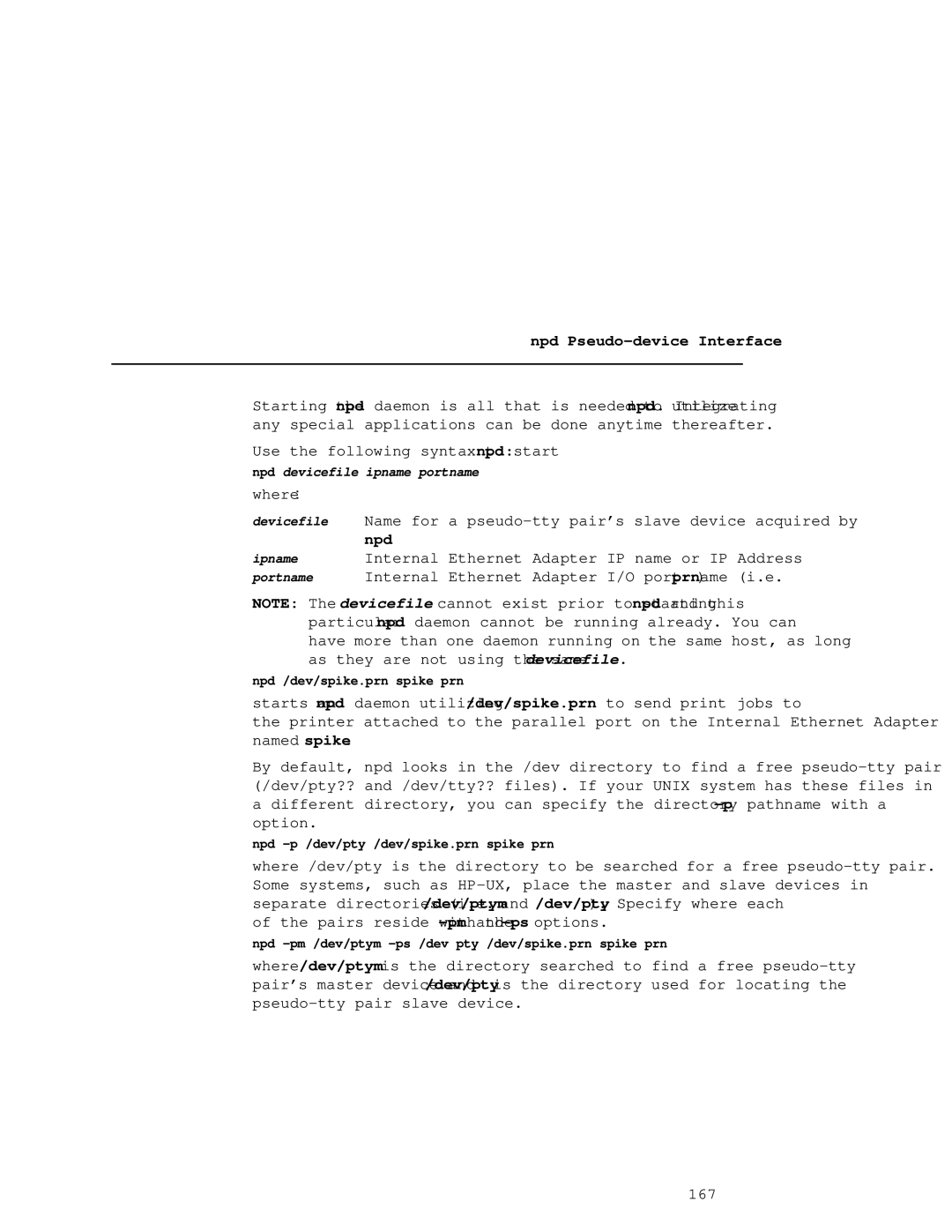npd Pseudo-device Interface
Starting the npd daemon is all that is needed to utilize npd. Integrating any special applications can be done anytime thereafter.
Use the following syntax to start npd:
npd devicefile ipname portname
where:
devicefile Name for a
ipname Internal Ethernet Adapter IP name or IP Address
portname Internal Ethernet Adapter I/O port name (i.e. prn)
NOTE: The devicefile cannot exist prior to starting npd and this particular npd daemon cannot be running already. You can have more than one daemon running on the same host, as long as they are not using the same devicefile.
npd /dev/spike.prn spike prn
starts an npd daemon utilizing /dev/spike.prn to send print jobs to the printer attached to the parallel port on the Internal Ethernet Adapter named spike.
By default, npd looks in the /dev directory to find a free
npd
where /dev/pty is the directory to be searched for a free
npd
where /dev/ptym is the directory searched to find a free
167
